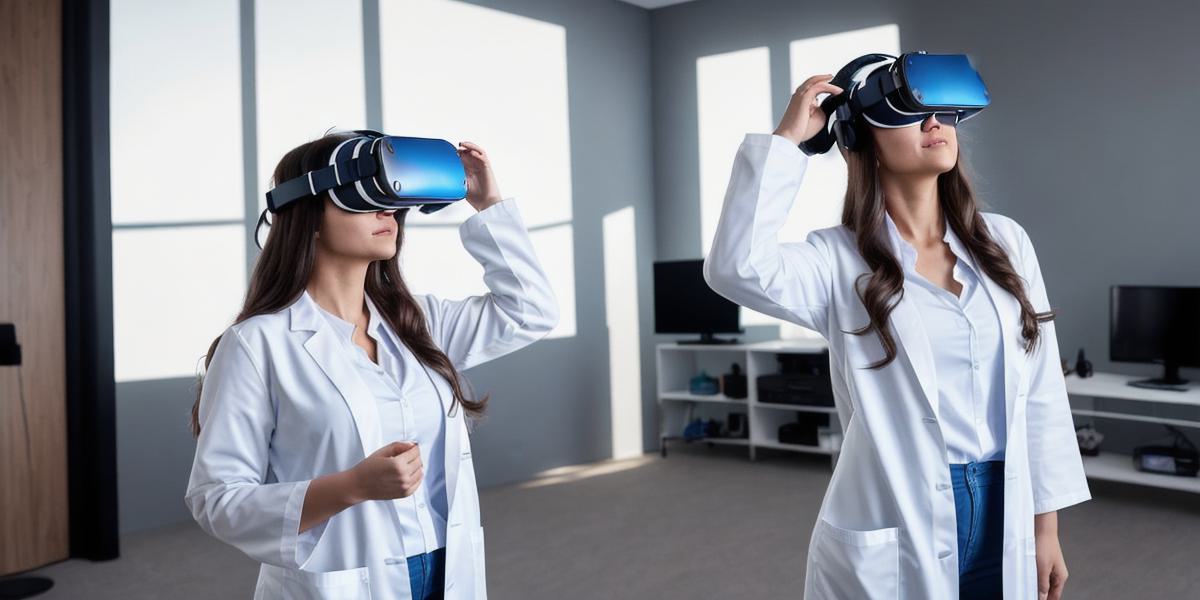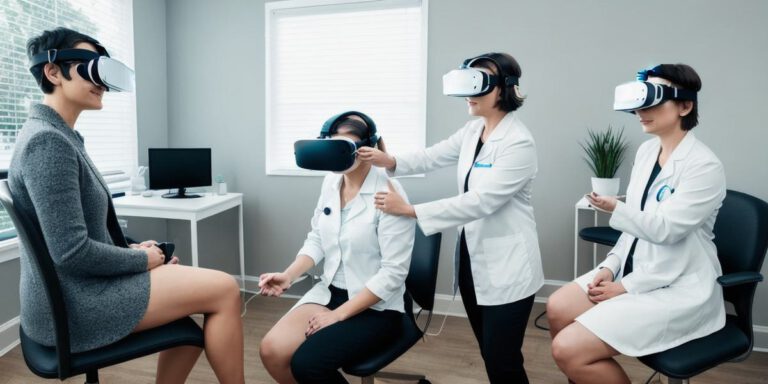Virtual Reality Exposure Therapy: Overcoming Phobias and Trauma in Immersive Environments

Virtual reality exposure therapy (VRET) is an innovative treatment approach that has gained significant attention in recent years. VRET involves using virtual reality technology to simulate real-life environments and experiences, allowing individuals to confront and overcome their phobias and traumas in a safe and controlled environment. In this article, we will explore the benefits of VRET, examine its effectiveness in treating various mental health conditions, and provide examples of successful VRET treatments.
One of the main advantages of VRET is that it allows individuals to confront their fears and anxieties in a highly immersive and realistic way. For example, someone with a fear of heights can use VRET to simulate climbing a tall building, gradually exposing themselves to increasing heights while receiving guidance and support from trained therapists. This exposure therapy technique has been shown to be highly effective in treating anxiety disorders, including specific phobias, social anxiety disorder, and post-traumatic stress disorder (PTSD).
Research has also demonstrated the effectiveness of VRET in treating PTSD. A study published in the Journal of Trauma and Dissociation found that VRET was as effective as traditional exposure therapy in reducing symptoms of PTSD in veterans who had experienced combat-related trauma. The study also noted that VRET was particularly beneficial for individuals who found it difficult to confront their traumas in a real-life setting.
Another area where VRET has shown promise is in treating addiction. For example, VRET can be used to simulate drinking alcohol or using drugs, allowing individuals to confront and overcome their addictive behaviors in a controlled environment. A study published in the Journal of Substance Abuse found that VRET was as effective as traditional cognitive-behavioral therapy (CBT) in reducing alcohol use among individuals with alcohol dependence.
In addition to its effectiveness in treating mental health conditions, VRET has also been shown to be safe and well-tolerated by patients. A review of multiple studies published in the Journal of Clinical Psychology found that VRET was generally safe and well-tolerated, with only a small percentage of participants experiencing adverse effects such as motion sickness or anxiety.
Overall, VRET is a promising treatment approach that has shown significant effectiveness in treating various mental health conditions. As technology continues to advance, VRET is likely to become an increasingly popular and effective tool for therapists and patients alike.
FAQs:
- Is VRET safe?
VRET is generally safe and well-tolerated by patients, with only a small percentage experiencing adverse effects such as motion sickness or anxiety. - Can VRET be used to treat addiction?
Yes, VRET can be used to simulate drinking alcohol or using drugs, allowing individuals to confront and overcome their addictive behaviors in a controlled environment. - What types of mental health conditions can VRET be effective in treating?
VRET has shown effectiveness in treating anxiety disorders, including specific phobias, social anxiety disorder, PTSD, and addiction. - How does VRET work?
VRET involves using virtual reality technology to simulate real-life environments and experiences, allowing individuals to confront and overcome their fears and anxieties in a safe and controlled environment.








